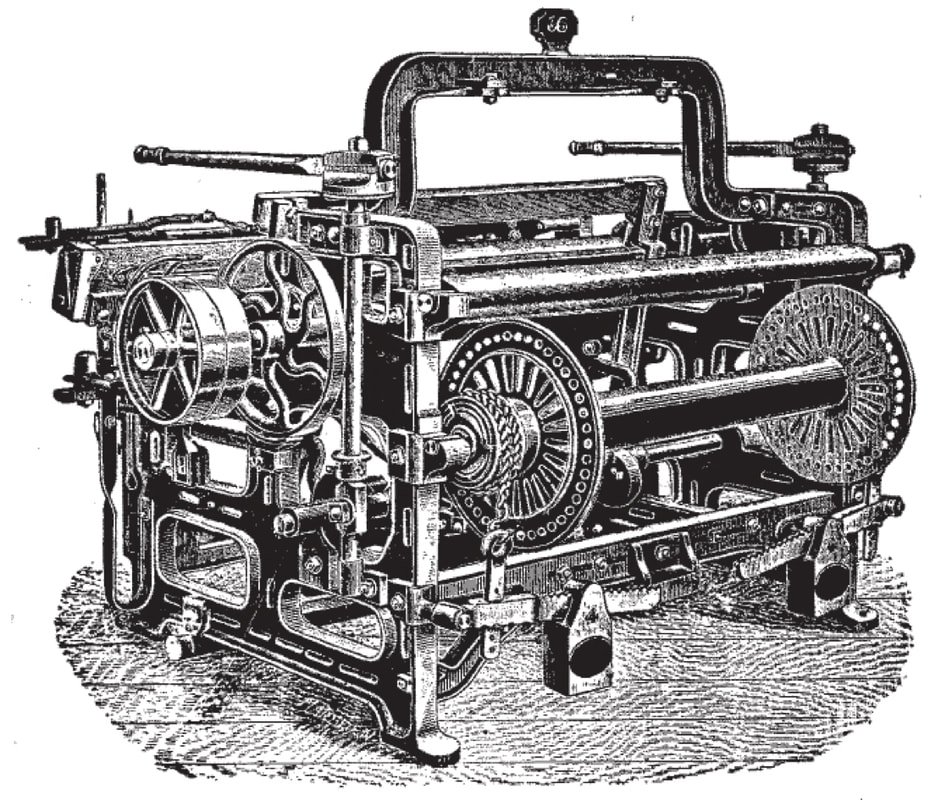Exploring The History Of What Was The Power Loom

The power loom revolutionized the textile industry. It mechanized the weaving process, drastically increasing production speed and efficiency. What was the power loom? Invented by Edmund Cartwright in 1784, this ingenious machine paved the way for industrialization and transformed the way fabrics were produced. Let’s delve deeper into the fascinating history and impact of this groundbreaking invention.
Exploring the Power Loom: A Revolutionary Invention
Welcome, young historians and curious minds, to a fascinating journey back in time to discover the incredible invention that changed the course of history – the power loom. Imagine a world without the clothes we wear, the fabrics that adorn our homes, or the colorful patterns that bring joy to our lives. The power loom played a crucial role in revolutionizing the textile industry, making it possible to create fabrics faster and more efficiently than ever before.
The Beginning of Textile Industry
Before we delve into the wonders of the power loom, let’s take a step back and explore the early days of the textile industry. Long ago, cloth was woven by hand on simple wooden frames called looms. These traditional looms required a skilled weaver to carefully interlace threads to create intricate patterns and fabrics. While this method was effective, it was slow and labor-intensive, limiting the amount of cloth that could be produced.
Enter the Power Loom
Now, imagine a loom that could weave fabric automatically, without the need for human hands to guide the threads. This revolutionary invention was known as the power loom. Invented in the late 18th century, the power loom transformed the textile industry by harnessing the power of steam engines and later, electricity, to mechanize the weaving process.
How the Power Loom Works
At the heart of the power loom is a series of interconnected mechanisms that work together to weave threads into fabric. The process begins with yarn being wound onto large spools, which are then loaded onto the loom. As the machine is set in motion, the spools release the yarn, which is guided through a series of heddles and reed. The heddles lift and lower the threads in a precise pattern, while the reed pushes the weft yarn through, creating the woven fabric.
The Impact of the Power Loom
The introduction of the power loom had a profound impact on the textile industry and society as a whole. With the ability to produce fabric at a much faster rate than traditional handlooms, the power loom led to an increase in textile production and availability of affordable clothing. This, in turn, fueled the growth of the fashion industry and sparked new trends in clothing design.
Furthermore, the widespread adoption of power looms also contributed to the rise of industrialization, as factories sprung up to house these massive machines. This shift towards mechanized production marked a significant turning point in history, paving the way for modern manufacturing processes.
Legacy of the Power Loom
While the power loom is no longer the primary method of weaving fabric in today’s world, its legacy lives on in the textile industry. Many of the principles and technologies developed for the power loom have been adapted and refined for use in modern weaving machines. The spirit of innovation and efficiency that drove the creation of the power loom continues to inspire advancements in textile manufacturing.
As we conclude our exploration of the power loom, we are reminded of the ingenuity and creativity of humankind. The power loom stands as a testament to the power of innovation and its ability to shape the world around us. So the next time you put on a cozy sweater or wrap yourself in a colorful blanket, take a moment to appreciate the journey of that fabric, from the spinning wheel to the power loom, and the hands and minds that made it all possible.
Thank you for joining us on this enlightening journey through the history of the power loom. Stay curious, keep exploring, and never stop wondering about the wonders of the world.
The Power Loom Industrial Revolution | DAILY BELLRINGER
Frequently Asked Questions
What is the significance of the power loom in history?
The power loom revolutionized the textile industry by automating the process of weaving fabric. It increased the speed and efficiency of production, leading to higher output and lower costs, making textiles more accessible to a larger population.
How did the power loom operate?
The power loom used mechanical power to weave cloth. It had a system of gears and shafts powered by a steam engine or water wheel, which controlled the movement of the warp and weft threads to create the desired fabric pattern.
Who invented the power loom?
The power loom was invented by Edmund Cartwright, an English inventor, in 1784. His invention played a crucial role in the Industrial Revolution and transformed the textile industry.
What impact did the power loom have on society?
The introduction of the power loom led to significant social and economic changes. It increased the demand for skilled workers to operate and maintain the machines, while also reducing the need for manual labor in weaving, shifting the workforce towards factory employment.
Final Thoughts
The power loom revolutionized the textile industry in the 19th century. It automated the process of weaving fabric, increasing productivity significantly. Designed by Edmund Cartwright, the power loom utilized water or steam power to operate efficiently. This invention marked a milestone in industrialization by mechanizing a task historically done by hand. The power loom was a pivotal development that paved the way for modern manufacturing techniques.







